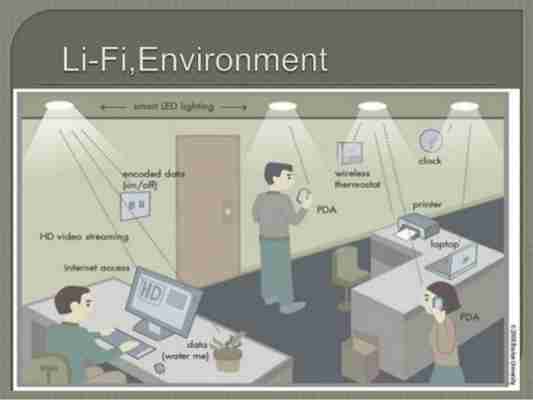Li-Fi : it’s a word that’s been lurking around the internet for the last couple of months (some may say years), and although we all love the idea of having much faster internet, very few of us know exactly how it works, and when we can expect to see it.
In a nutshell, “ Li-Fi ” means Light Fidelity , just as Wi-Fi means Wire Fidelity (but you knew that, right?). It’s basically a wireless optical networking technology that utilizes LEDs in order to transmit data.
Confused? Read on.
Light is part of the electro-magnetic spectrum, as are radio waves (what Wi-Fi currently runs on). The difference is that light has a frequency range ten thousand times higher than radio waves, therefore has the capacity to transfer data energy in far less time.
A professor from the University of Edinburgh called Harold Haas claims to have been the first person to identify light as a way to transfer internet data, which is not only faster but a lot more secure due to the fact light cannot penetrate walls. Here he is introducing and demonstrating the technology back in 2011.
Can’t view the video? Click here .
Just to give you another example of how fast it is, scientists involved in an experiment using Li-Fi last year were able to achieve data transmission at 224 gigabits per second. To put that into perspective, imagine downloading 18 movies (of 1.5GB each) in just one second. Still sounding a bit too science fiction for you?
The technology utilizes Visible Light Communication (VLC) , which basically works like an insanely fast (invisible to the human eye) Morse code. These “Morse” coded messages can be used to transmit binary codes.
You can see here the potential of how it could work and be adapted into real life:

Fascinating stuff huh?
Studies are still currently in motion, and there are many people saying it’s just not feasible or necessary to replace our Wi-Fi systems with Li-Fi technology. Instead, engineers are looking at ways the two technologies can work together. Late last year, it was announced that the company pureLiFi had joined forces with a French lighting company with the intention to release Li-Fi enabled products by the end of 2016. Stay tuned for more updates soon!
